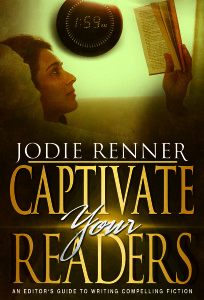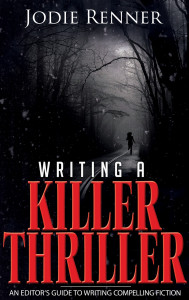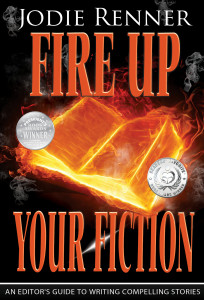Tell Don’t Show
Terry Odell
 Something we’ve all heard since we took writing seriously was “Show, Don’t Tell.” It’s been called the “Golden Rule” of writing. Showing gets readers involved with the characters. Showing connects readers to the characters. Readers will experience things along with the characters instead of just watching. All that is true enough, but as with any rule, there are exceptions.
Something we’ve all heard since we took writing seriously was “Show, Don’t Tell.” It’s been called the “Golden Rule” of writing. Showing gets readers involved with the characters. Showing connects readers to the characters. Readers will experience things along with the characters instead of just watching. All that is true enough, but as with any rule, there are exceptions.
Showing everything can be exhausting for the reader.
I was reading Michael Connelly’s Desert Star. I think the man’s earned enough kudos over the years to be considered someone we can learn from. Although I prefer reading a deeper point of view, Connelly’s an exceptional storyteller, and I don’t mind stepping back. He still draws me into the story. And you know what? He’s not afraid to TELL his readers stuff.

Image from Wikimedia Commons, by Mark Coggins
While showing might create a connection, there are times when you don’t need to show things. Times when your shouldn’t show things. As Lee Child (and probably others) said, “Write the slow parts fast and the fast parts slow.” Telling is a way to get through the slow parts. The parts where there are things the reader ought to know, but not in the same way as the action parts of the story.
Example:
Harry Bosch is looking at a cold case file. This is how Connelly writes it:
The crime scene photographer had been thorough and had taken dozens of “environmental” shots depicting the victim’s entire home—inside and out—at the time of the murder. These included shots of the contents of closets and cabinets and drawers and of photos framed and hung on the walls. All of this allowed the case investigators ready access to the entire environment of the killing location. It also allowed them to better understand the victim by seeing how she had set up her home. It gave them an idea of the things that were important to her in life.
Did we need to see every picture? See Bosch’s visceral reaction to each of them? Experience what it feels like to turn pages in a binder? How much would it add to the story? Probably very little. But now, when we see the term environmental shots later in the book, we’ll know exactly what the term means.
It’s tough to “tell” well in a close POV, because you’re deep in the head of the character, experiencing everything as though there’s a movie camera embedded in his brain. Getting information across to readers when you’ve got characters on the page who already know the terminology, or how something works, ends up being “As You Know, Bob” speech. I’ve worked my way around it by bringing in a naïve character if possible, so she can ask questions and my in-the-know characters can answer them. There’s also no rule that you can’t step back from deep POV a little when it’s necessary for pacing.
Here’s a way Connelly dealt with the issue. Ballard is bringing Bosch up to speed.
“… Back then, the ODs were leaning on the theater director, a guy named Harmon Harris, because they heard he and Wilson had an affair a year before her death. They thought maybe there was bad blood between them. Harris denied the affair and they dropped it when he offered up Beecher as an alibi.”
She knew that Bosch would know that OD was cold case lingo for original detective.
OK, so we get a quick peek into her thoughts, and we readers now know what OD means and Connelly can use the term whenever he needs to.
And another, this from Echo Park:
“I have no idea, Olivas. What?”
“Your fifty-ones from Gesto.”
He was referring to the Investigative Chronology, a master listing kept by date and time of all aspects of a case, ranging from an accounting of detectives’ time and movement to notations on routine phone calls and messages to media inquiries and tips from citizens. Usually, these were handwritten with all manner of shorthand and abbreviations employed as they were updated each day, sometimes hourly. Then, when a page became full, it was typed up on a form called a 52, which would be complete and legible when and if the case ever moved into the courts, and lawyers, judges and juries needed to review the investigative files. The original handwritten pages were then discarded.
Harry would think of this in far less time than it took me to type it, but readers can accept that the simple reference to the “fifty-ones” would send his mind to what they were. Readers have the information, and it’s presented a lot more efficiently than using “show.”
Throughout his books, Connelly gives readers a lot of information about how the police department works, and he manages to keep readers—at least this reader—willing to accept that Harry Bosch is thinking these things, be it the history of the Parker Center in LA, where the chief’s office is, or how the desks are arranged in the homicide department. And that, to me, is the skill. Get the exposition in there without the reader feeling like you’re stopping the story to tell.
What about you, TKZers? Showing? Telling? How do you balance them? Do you even notice, or can you keep things seamless?
Any authors who do telling well?
 Available Now in digital, paperback, and audio
Available Now in digital, paperback, and audio
Deadly Relations.
Nothing Ever Happens in Mapleton … Until it Does
Gordon Hepler, Mapleton, Colorado’s Police Chief, is called away from a quiet Sunday with his wife to an emergency situation at the home he’s planning to sell. A man has chained himself to the front porch, threatening to set off an explosive.
 Terry Odell is an award-winning author of Mystery and Romantic Suspense, although she prefers to think of them all as “Mysteries with Relationships.”
Terry Odell is an award-winning author of Mystery and Romantic Suspense, although she prefers to think of them all as “Mysteries with Relationships.”




